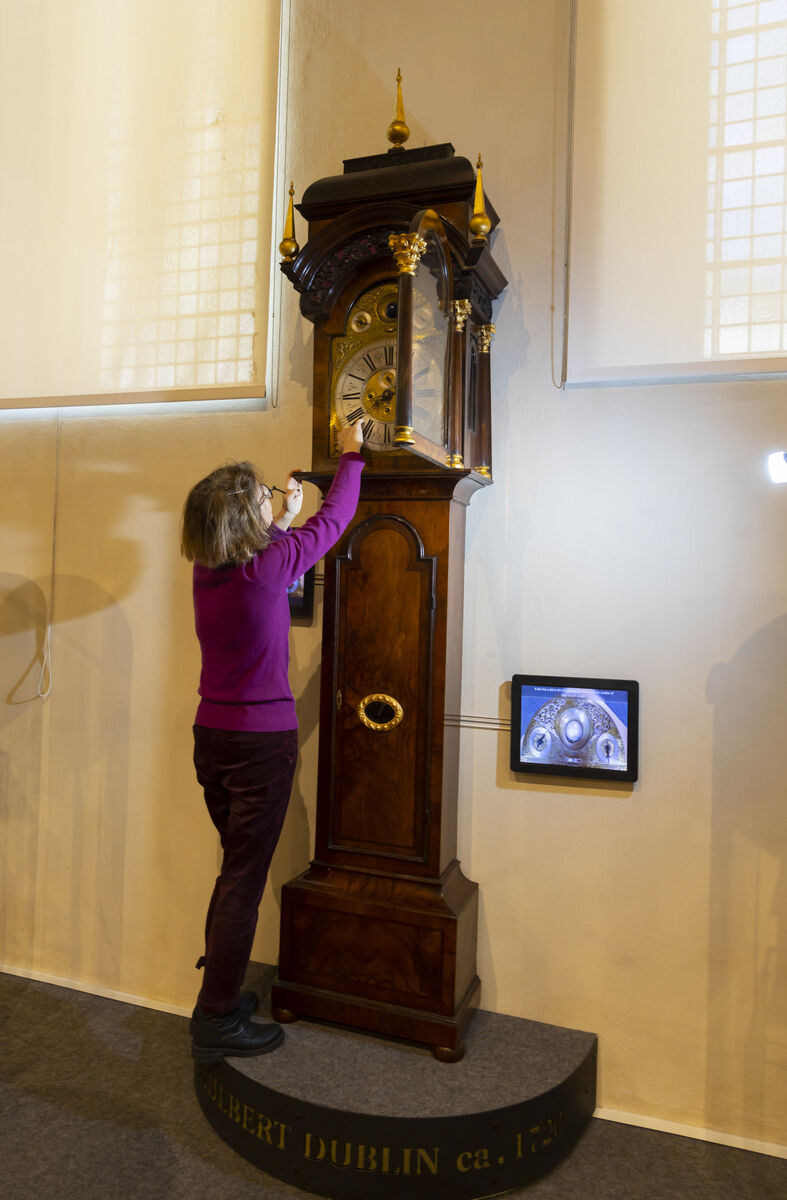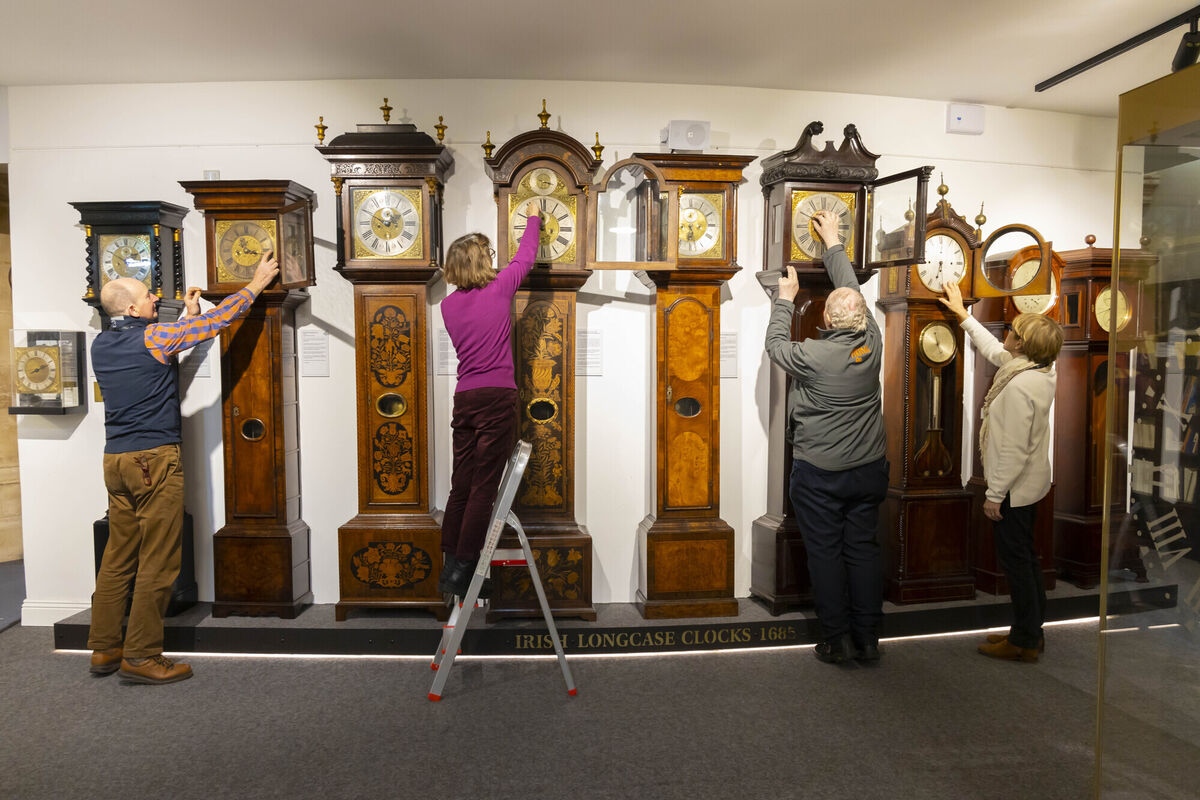As the clocks go forward, Waterford group set to change the hands of 600 timepieces

Rosemary Ryan, curator, at the Irish Museum of Time in Waterford City. Pictures: Patrick Browne
Time waits for no man and in Waterford a dedicated group of clock-watchers are getting ready to spring into action and change the hands of 600 timepieces on Sunday.
What's worse is they won't even get an extra hour in bed as the clocks are set to ‘spring forward’ one hour.
Nonetheless, staff and volunteers at the Irish Museum of Time at Greyfriars church in Waterford City, which opened four years ago, are unfazed as the changing of the clocks twice a year “has become a bit of a ritual”.
According to the museum’s curator manager, Rosemary Ryan, the process of changing the time on each clock is “a slow and steady one".
“Some of the clocks have certain little quirks when you wind them, so it really is an exercise of patience.
“They are really delicate, so they need to be done properly,” Ms Ryan said.

The process is expected to take about a day and a half and it is work Ms Ryan “enjoys immensely”.
“As curators, we don’t find this tedious, this is getting up close and personal with magnificent objects. You get to commune with the objects, the lovely wood, the mechanics, the metal.
“Some of these clocks, they have a real presence, especially the long case clocks, you have an experience with them, like anyone has in a museum,” she said.

One tip Ms Ryan has for anyone changing their clocks this weekend is to “never, ever move the hands backwards”.
“Anti-clockwise is the worst thing you can do for a clock,” she warned.
Two of the country’s best and long-standing horologists, David Boles and Colman Curran, will be joining the changing of the clocks in the museum this weekend.
The men, both from Dublin, donated their life collections of timepieces to the museum when it first opened.
“They are absolute experts. Through the years, they acquired the finest collections of Irish clocks and watches, and then they had the idea of donating them to Waterford, which is an absolute honour,” Ms Ryan said.
As well as hosting some of the oldest ever Irish clocks, the museum is also home to timepieces from all over the world, including countries such as Germany, Switzerland, the UK, the US, and Japan.
Turret clocks which once adorned church steeples, and a line of 10 grandfather clocks illustrating the evolution of Irish clock-making, are also on display.
The oldest clock in the world with an anchor escapement also lives there. It is a bracket clock which was made in London by William Clement in 1663.
An anchor escapement is what makes a clock tick, and the clock was acquired by Mr Boles from Ballinamona House in Co Waterford.
The exhibition is the only horological museum on the entire island of Ireland.
“Here, we celebrate Irish craft, design, and work. That’s what we are about,” Ms Ryan said.















